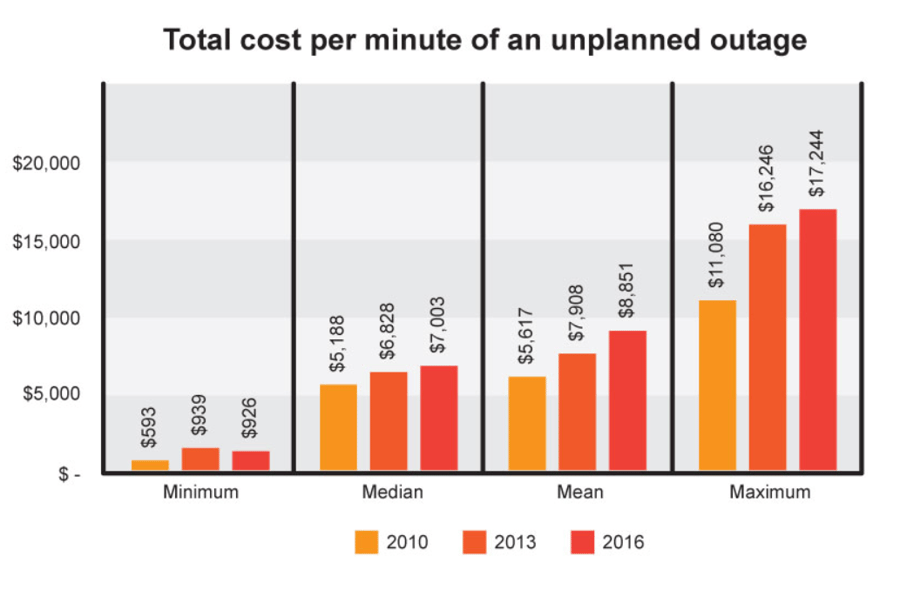
Every second that your eCommerce website is down equates to money walking out of your virtual storefront. When considering the impact that a downed server has on eCommerce, one of the first examples that comes to mind is Amazon. Just a few years ago, their site was down for around 40 minutes, resulting in approximately $5 million in losses.
Most eCommerce businesses would be ecstatic if they could make in a year a fraction of what Amazon lost in 40 minutes. Still, every lost dollar, customer, or potential connection hurts. Ecommerce companies that experience downtime lose more than just sales. They lose their reputation, diminish their search engine optimization (SEO), and experience efficiency issues. Customers have come to expect that the websites they visit will be up and running 100 percent of the time.
Using a good hosting service can help you reach that goal.
This is something you really need to be careful of when opting for discount hosting solutions. For context, Nathan Finch of Aussie Hosting tracked cheap hosts for downtime issues over a 12 month period and found that cheap shared hosting companies had 3-4 times the downtime instances over dedicated hosts.
First Impressions Mean Everything for Ecommerce Businesses
Imagine going to a brick-and-mortar store when you need to purchase something and finding it is closed at odd hours. Or, imagine going to the store and not being able to pay because there was an issue with the cashier. What are the chances of you going back? Slim to none.
The same thing is true for online businesses. The customer-to-provider dynamic is a reflection of what is found in traditional transactions. The difference is that the customer has more power when engaging in digital transactions. They don’t need to drive to a different location to purchase the products that they want. They're also not limited to the businesses located in their immediate vicinity. With one mouse click, they can abandon your eCommerce site and do business with a company they feel is more reliable.
It’s important for eCommerce businesses to promote the products and services that they have for sale. But, what’s equally important is investing the time and money to ensure that their eCommerce solutions are robust; this means finding the most reliable eCommerce hosting available.
The True Cost of Downtime

Downtime is calculated in two ways: quantifiable downtime that can be measured and unquantifiable downtime due to intangible factors. Calculating downtime in real dollars is relatively easy. Simply take your yearly sales, divide the sales amount by minutes, and use that number to determine how much money you're losing per minute when your website is down.
Lost Productivity
Losses due to downtime aren’t just financial. It’s estimated that the average employee loses up to 30 minutes of productivity every week because of a problem with their work computer. What’s more, downtime from outside issues like crashed networks leads to an additional 200 minutes of downtime. Altogether, downtime results in about 545 hours of lost employee productivity each year.
That’s time that isn’t spent on customer service or growing your business due to problems that are largely avoidable. This also impacts production costs if you’re in a manufacturing industry. If your facility normally produces 500 units per hour at a cost of $50 per unit, your production loss for a single hour could be as high as $25,000.
Lost productivity is another one of the quantifiable financial losses that occur when your network is down or not working properly. You can fold it into your overall cost by factoring in the number of employees, their salaries, the number of hours worked per week, and the percentage of your workforce that’s affected by downtime.
There are also a number of unquantifiable costs that come with the downtime that are equally as important.
For example, your reputation as a reliable service provider. You've likely spent countless hours and thousands of dollars building your company's reputation. There are new players that enter the market every day looking to steal your customers. You also realize that your reputation has to be spotless if you're going to keep up with the competition in your field. If you don't have a stable business website that makes it easy for customers to shop for the product or services they need, your reputation will be damaged.
This leads to a ripple effect that's hard to mitigate once it gets rolling. As word-of-mouth spreads through social media, potential customers will be scared away from doing business with you. Because people are more likely to vent when they're unhappy with a business, you'll probably find an increase in bad reviews on Yelp, Google My Business, and other industry or customer review platforms. That chases away any potential traffic gained from organic search.
And, what’s the result?
Instead of using your marketing resources to promote your products, you'll find yourself wasting valuable time and money rebuilding your reputation and trying to regain the trust of customers who were burnt because your site was down. You'll also lose the opportunity to gain new customers or leads.
Your Position in the Search Engine Page Rankings (SERPs) Will Suffer
When your site is down, it can have a negative impact on your SEO ranking. In the time it takes to recover a downed website, search engines may give your competitors higher rankings because they are available. Do you want your site to lose its ranking, especially to a competitor, because you opted for cheap hosting that’s constantly down?

Matt Cutts, a Google engineer, is quoted as saying: “Shorter outages may not be as serious as longer ones. However, the detrimental effect that they have is undeniable.” Just think about the amount of money and time you spent enhancing the SEO value of your eCommerce website. Having an unreliable server may impact that ranking, which leads to reinvesting in your search engine optimization efforts all over again.
Some Downtime Is Inevitable
There is not, and likely will never be, a hosting company that can offer 100 percent uptime. Hardware can go down, human error comes into play, and software can malfunction. Most platforms also experience some planned downtime for system maintenance and upgrades.
When looking for a hosting company, you want to find one that will minimize these occurrences as much as possible. Reliable hosting companies can bring you very close to 100 percent uptime thanks to game changing advances in storage, cloud, virtualization, and server technology.
What's the difference in uptime percentages?
The average amount of downtime experienced by a hosting platform that promises 99.999 percent uptime is about 5.26 minutes per year. Compare that to the 17 hours, 31 minutes, and 53.9 seconds of downtime with a Service Level Agreement (SLA) guarantee of 99.8 percent uptime. That fraction of a percentage can make a huge impact on your bottom line.
Much depends on how much you are willing to invest in your eCommerce infrastructure. For example, you could invest in hybrid platforms that use a combination of public hosted and private in-house systems. This provides an additional level of protection.
When your eCommerce site is down, you need to be transparent and communicate with your clients. If there is scheduled maintenance, make sure your clients know this well in advance. Also, show them how this short amount of downtime will lead to improved services for them. If the outage was unexpected, briefly and sincerely explain to your customers why it happened and the steps that are being taken to prevent it from happening again.
Amazon is a good example of this. When their site goes down, even for a few minutes, it makes the news. However, Amazon aggressively works to appease their customers. This strategy works for Amazon because they're making billions of dollars every year.
Now, how much are you able to lose?
When downtime is unavoidable, or in those cases where it's unforeseeable, you need to know how much pain your company can take. This leads us to two other calculations, Recovery Time Objective (RTO) and Recovery Point Objective (RPO).
The RTO is a calculation of how much time your app or service needs to be available to avoid catastrophic losses. In short, how much time can you afford for recovery before the damage is irreversible? The less time available to reach your RTO, the more expensive the solutions.
When it comes to figuring your RPO, this is how much data will be lost during a specified period of time. If your business is more data-centric and you're performing regular backups, your recovery point will be lower than a company that doesn't have these things going in their favor.
Protect Your Business from Unwanted Downtime
The hosting server you use has a bigger impact on your eCommerce website's bottom line than you may realize. Your site could go down and you not even know it. By the time you check the site, it's up and running again. But in the interim, your reputation has been damaged, you've lost ranking in search engines, your revenues are lower, and your loyal customers have gone elsewhere. If you’re planning to sell products online, this is the worst case scenario.
We would love to hear from you. What steps have you taken to protect your eCommerce site from unnecessary downtime? How have you dealt with downtime when it does occur? Let us know in the comments section below.





Leave a reply or comment below